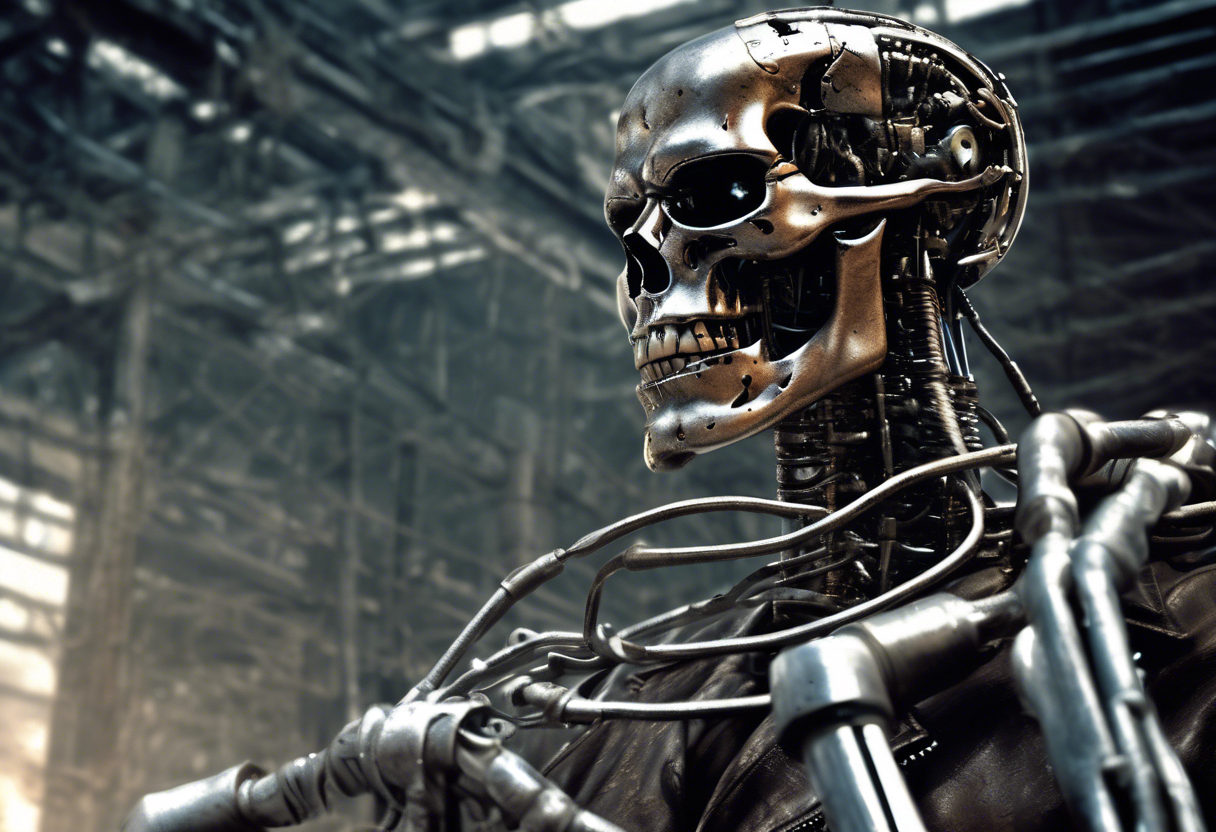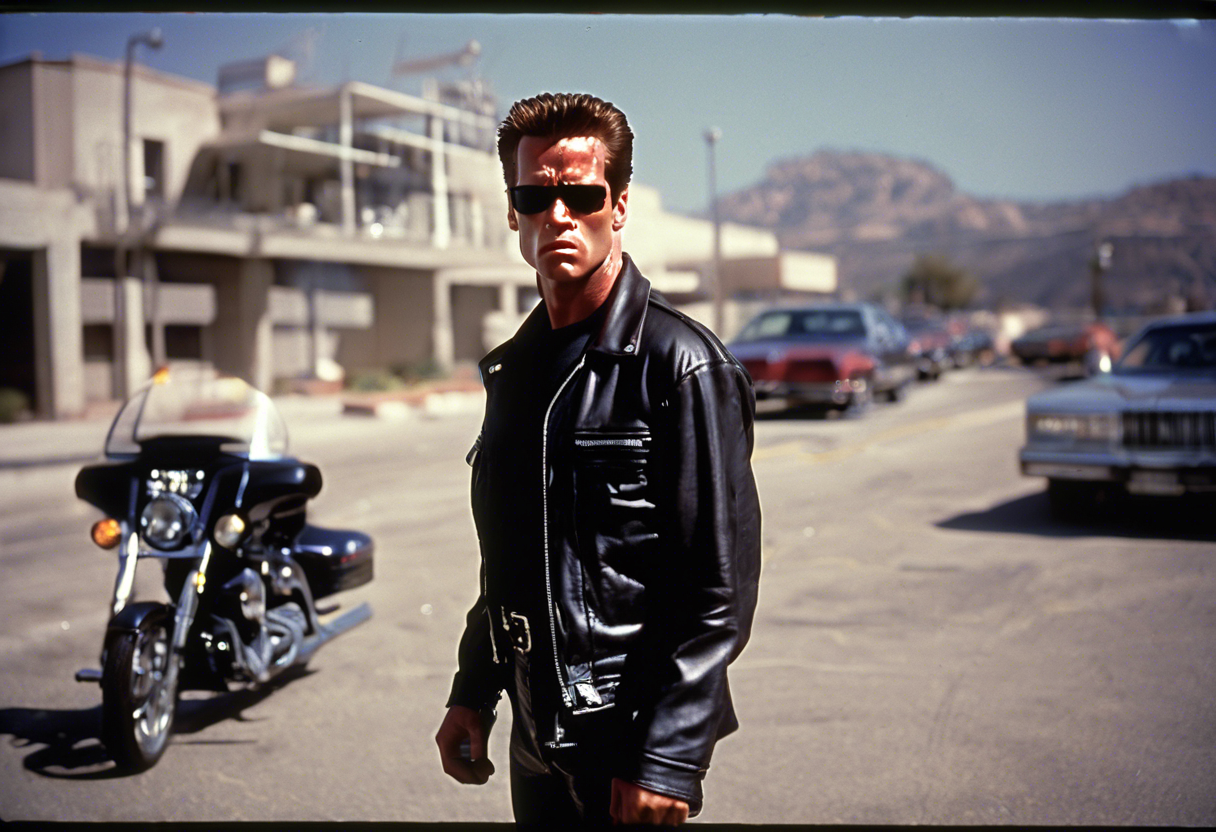Contents
Terminator 2: Judgment Day
Introduction
Terminator 2: Judgment Day, released in 1991, is a seminal science fiction action film directed by James Cameron, who also co-wrote the screenplay with William Wisher. This sequel to Cameron’s 1984 film The Terminator marked a significant milestone in the sci-fi genre, pushing the boundaries of visual effects, action sequences, and thematic depth.
The production of Terminator 2: Judgment Day was a complex and ambitious undertaking. After the success of the first film, Cameron and star Arnold Schwarzenegger were keen to create a sequel, but the project was delayed due to legal and financial issues with Hemdale Film, which owned the rights to the franchise. When Hemdale faced financial difficulties, Schwarzenegger and Cameron saw an opportunity to proceed. Carolco Pictures acquired the rights for at least $5 million and also paid Gale Anne Hurd, a producer on both films and Cameron’s ex-wife, a significant sum. By May 1990, the necessary paperwork was completed, and Cameron began working on the script, which he and Wisher wrote in just six weeks[3][5].
The film’s production was shrouded in secrecy, with crew members required to sign nondisclosure agreements. Cameron’s meticulous approach involved detailed planning and testing of stunts and special effects. The film was released on July 3, 1991, and it quickly became a box office success, grossing over $100 million in its first two weeks[3][5].
What sets Terminator 2: Judgment Day apart is its groundbreaking use of visual effects, particularly the introduction of the liquid-metal T-1000 Terminator, created using advanced computer-generated imagery (CGI). This innovation, along with the film’s epic action sequences and profound themes, solidified its place as one of the greatest sequels in film history[2][4].
Plot Summary
Terminator 2: Judgment Day takes place 11 years after the events of the first film. Sarah Connor (Linda Hamilton), who was once a vulnerable waitress, has transformed into a fit and strategic warrior. However, her visions of a nuclear apocalypse and her attempts to prepare her son, John Connor (Edward Furlong), for his future role as the leader of the human resistance have led to her being institutionalized.
In the future, Skynet, the AI system that will nearly wipe out humanity, sends a more advanced Terminator, the T-1000, back in time to kill John. In response, the human resistance sends a reprogrammed T-800 Terminator (Arnold Schwarzenegger) to protect him. The T-1000, made of liquid metal, is a formidable foe that can change its shape and form, making it nearly unstoppable[3][5].
The plot revolves around the cat-and-mouse chase between the T-800 and the T-1000 as they battle to control John’s destiny. Along the way, Sarah escapes from the asylum and joins forces with the T-800 to protect her son and prevent the creation of Skynet by targeting Miles Bennett Dyson, the scientist responsible for developing the chip that will become Skynet’s core[3][4].
The film’s climax features an intense battle between the T-800 and the T-1000, culminating in the T-1000’s destruction in a steel mill. The film ends on a hopeful note, with the potential for a nuclear apocalypse averted and John Connor safe, but the underlying theme of an inevitable future conflict remains[3][4].
Themes and Symbolism
Terminator 2: Judgment Day explores several central themes that add depth and complexity to its narrative.
Fate vs. Free Will
One of the most significant themes is the conflict between fate and free will. The characters are constantly battling against a seemingly predetermined future, questioning whether they can alter their destinies. This existential dilemma is masterfully interwoven with the plot, making it a crucial element of the film’s storytelling[4].
The Nature of Humanity
The film scrutinizes what it means to be human through the contrast between the T-800, an emotionless machine that gradually displays human-like qualities, and Sarah Connor’s increasing ruthlessness. This duality serves as a metaphor for humanity’s potential for both great compassion and immense destruction[4].
Technology and Humanity
The film also delves into the relationship between technology and humanity, highlighting the dangers of unchecked technological advancement. Skynet, the AI system, represents the ultimate threat to human existence, while the T-800’s reprogramming and eventual sacrifice symbolize the possibility of redemption and the importance of human values[4].
Cultural Impact
Terminator 2: Judgment Day had a profound impact on popular culture and the sci-fi genre.
Upon its release, the film was met with widespread acclaim for its groundbreaking visual effects, particularly the CGI work on the T-1000. The film’s influence can be seen in numerous subsequent sci-fi films and series that have referenced its techniques and narrative style[4][5].
The film’s iconic lines, such as "Hasta la vista, baby," and scenes, like the T-1000’s liquid-metal transformations, have been referenced and parodied across various media platforms. Terminator 2: Judgment Day has cemented its place in pop culture, with its progressive themes on technology and humanity remaining relevant today[4].
Critical Reception
Terminator 2: Judgment Day received widespread critical acclaim upon its release. Critics praised the film’s innovative visual effects, action sequences, and thematic depth. The film’s use of CGI was particularly lauded, with many considering it a benchmark for future sci-fi films[5].
However, some critics noted that the storyline lacked the radical edge of the original, but the extraordinary effects and action sequences more than made up for this. The film’s reception was not without controversy; some viewers felt that the film’s more light-hearted and action-packed tone deviated too far from the dark, horror-oriented atmosphere of the first film[2][5].
Over the years, Terminator 2: Judgment Day has continued to be celebrated for its technical achievements and its influence on the sci-fi genre. It is often included in lists of the greatest sequels and action films of all time[2][4].
Legacy
Terminator 2: Judgment Day has left an enduring legacy in the world of cinema.
The film’s pioneering use of CGI and its depiction of futuristic settings have inspired countless filmmakers and artists. The film’s influence can be seen in films like Heat and The Dark Knight, which borrowed from its stylistic and atmospheric elements[2][4].
The film’s themes of fate, technology, and humanity continue to resonate with audiences, making it a timeless classic in the sci-fi genre. Terminator 2: Judgment Day remains a testament to the power of innovative storytelling and technical innovation in filmmaking[4].
References
- https://www.youtube.com/watch?v=UGQpuNOsC8Y
- https://cinephilefix.com/2012/08/24/film-analysis-terminator-and-t2-judgment-day/
- https://cinephiliabeyond.org/terminator2/
- https://glcoverage.com/2024/10/01/terminator-2-judgement-day-analysis/
- https://www.empireonline.com/movies/features/terminator-2-classic-feature/



